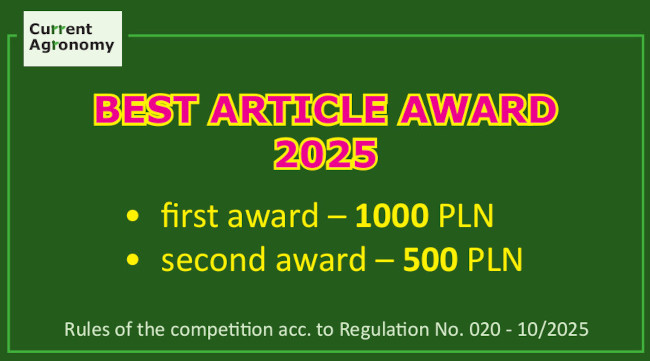Chelate-induced accumulation of rare earth elements in plants grown on soil and ash-based growing media
Main Article Content
Abstract
Phytoextraction is a phytoremediation technique that uses plants to remediate contaminated areas. The aim of the study was to investigate the differences between the use of two doses of chelate (5 mM and 10 mM): CA, EGTA, and EDTA on three selected plant species which grew on two substrates (soil with increased REE content, ash). The study focused on the following rare earth elements (REE) representatives: lanthanum (La), cerium (Ce), europium (Eu), and gadolinium (Gd). Three plant species were included in the study: common yarrow (Achillea millefolium L.), red clover (Trifolium pratense L.) and autumn fern (Dryopteris erythrosora (D.C.Eaton) Kuntze). The plant were grown on two substrates, the main components of which were soil with increased REE content and ash. Plant samples, divided into aboveground part and underground part, were analyzed by ICP-MS. The obtained REE concentrations in plant tissues ranged from 0.02 to 60.20 mg kg−1 (La), 0.05 to 62.22 mg kg−1 (Ce), 0.01 to 45.91 mg kg−1 (Eu), and 0.02 to 63.60 mg kg−1 (Gd). To determine the ability of plants to phytoextract REE, two factors were calculated: the translocation factor (TF) and the bioconcentration factor (BCF). The highest TF value was obtained for D. erythrosora and A. millefolium, when they were grown on substrate with ash. In the experiment, the BCF index value was not higher than 1. In general, the effect of chelates on REE accumulation was plant-specific. The application of CA resulted in the most efficient REE accumulation by plants.
Article Details

This work is licensed under a Creative Commons Attribution 4.0 International License.

